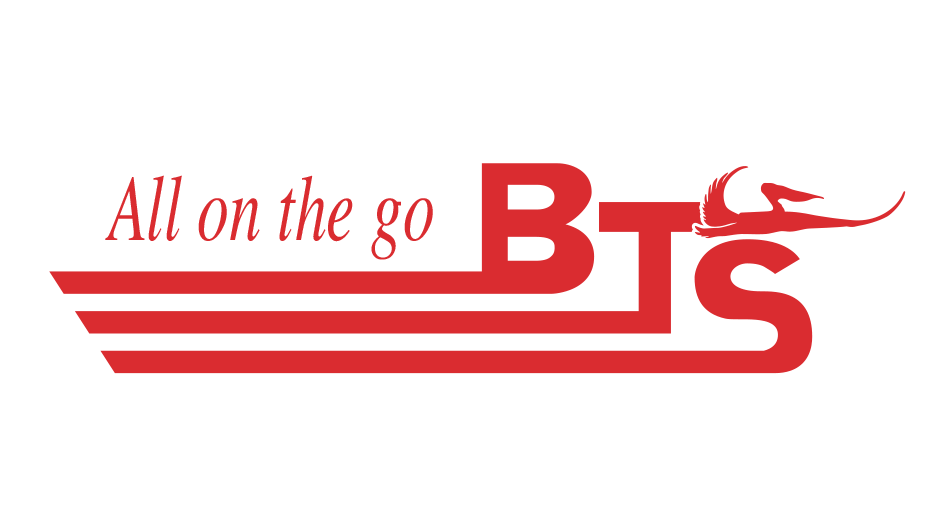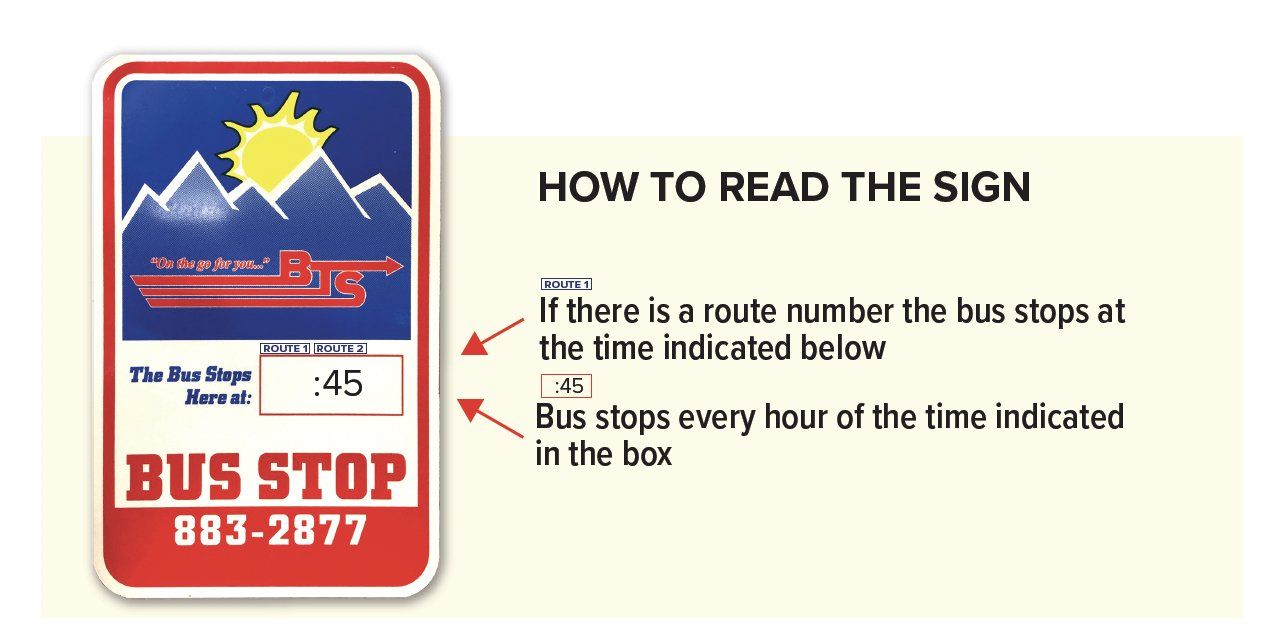RIDER INFORMATION
WELCOME ABOARD!
RIDER GUIDELINES
WELCOME ABOARD!
RIDER GUIDELINES
- Please do not tamper with vehicle and/or transit equipment, as it may be needed to help you someday.
- Pets must be in a proper carrier. Service animals are exempt as they are not considered pets.
- Reasonable hygiene is expected; please do your best to not offend others.
- Please use courtesy with the driver and other passengers. No loud, rude, or profane language will be permitted.
- No use of tobacco, alcohol and/or possession of illegal drugs allowed on the bus
- Food and drinks must be in a closed spill-proof container. Refrain from eating on the bus.
- Please understand we must accommodate all riders, some bags may be limited.
- For the safety of all riders, please wait until the driver has stopped driving to ask questions.
- Reasonable accommodations may be available upon request.
- Basin Transit Service reserves the right to refuse service
Stop Times
Getting On and Off
As the bus approaches, observe the destination sign and please have your exact fare or bus pass ready; drivers do not make change. Seat yourself safely and quickly towards the back allowing the front seats for senior citizens and people with disabilities. When you are near your stop, press the yellow strip (or pull cord) located along the windows to signal the driver. The strip will activate a chime, and the stop requested light will illuminate. Please do not stand until the driver has made a complete stop, then exit through the rear door.
Things to remember
• Please don’t eat or drink on the bus.
• You are welcome to listen to music with earbuds or headphones.
• Pets must be kept in a carrier unless it’s a service animal.
Transfers
Transfers switch you to a mainline route from an adjacent (feeder) route and vice-versa. Ask the driver for a transfer as you board the bus and pay your fare. The transfer is dated, timed and must be used within 90 minutes. As you board the transfer bus, show the driver your valid transfer to pay for the ride.
Schedules are available on all buses, on our web site, and you may request one by mail by calling our office at (541) 883-2877.
Plan Your Trip
TAKE YOUR BIKE ON THE BUS
Prepping Your Bike
Remove water bottles, pumps, and other loose items.
Loading Your Bike
You can load your bike from the curb or in front of the bus. Do not step into oncoming traffic to load your bike.
Use one hand to pull down the release and hold your bike with your other hand. Do not lean your bike against the bus.
Lift your bike onto the bike rack and fit wheels into the wheel slots. Each wheel slot is labeled for front and rear wheel.
Raise the support arm over the front tire. Your bike is now securely latched.
You can load your bike from the curb or in front of the bus. Do not step into oncoming traffic to load your bike.
Use one hand to pull down the release and hold your bike with your other hand. Do not lean your bike against the bus.
Lift your bike onto the bike rack and fit wheels into the wheel slots. Each wheel slot is labeled for front and rear wheel.
Raise the support arm over the front tire. Your bike is now securely latched.
Unloading Your Bike
Inform the bus driver that you will be unloading your bike as you approach your stop.
Inform the bus driver that you will be unloading your bike as you approach your stop.
Use the front door to exit the bus. Unload your bike from the front of the bus or the curb, not from the street.
Raise the support arm off the tire. The support arm automatically folds down in a secure position.
Lift your bike out of the bike rack.
If there are no other bikes in the rack, fold up the bike rack against the front of the bus.
Step away from the bus with your bike.
Lift your bike out of the bike rack.
If there are no other bikes in the rack, fold up the bike rack against the front of the bus.
Step away from the bus with your bike.
Types of Bikes Allowed
Only single-seat, two-wheeled bikes, folding bikes, and recumbents the size of a standard bike are allowed on the bus.
Bike Restrictions
Tandems and bikes with oversized wheels, three or more wheels or those powered by internal-combustion engines cannot be accommodated.
Electric bikes with a sealed battery compartment are permitted.
Some bikes have wheels that are too large or too far apart to fit in the bike racks. Max Tire Width: 2.35”


